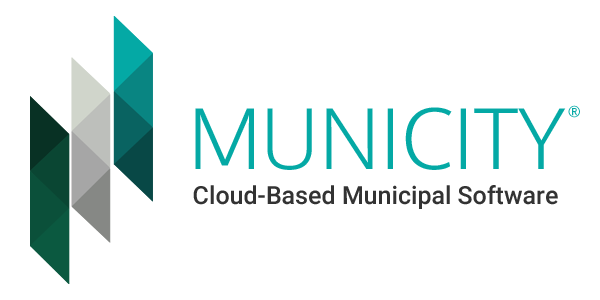
City of Roseburg, OR
Community Development Pushes Permitting System into 21st Century on Its Own Terms
Roseburg, OR is home to a population of 22,000 spread across 10.2 square miles, which encompass four historic National Register Districts. The City recently modernized its permitting system by migrating to Municity software. The ability to configure the software in line with how City departments prefer to manage their parcel information was key to a smooth implementation.

A Busy Office Hobbled by Failing Technology
Roseburg’s Community Development Department provides the overall management and coordination of Planning, Economic Development, Historic Preservation, Code Compliance, and Floodplain Information for some 12,000 land parcels. For years, Technician Chris Morgan manned the Department’s front lines, answering the phones, working the counter and updating addressing
For too many of those years, she struggled with obsolescence. “My Permit Pack software needed to be replaced 10 years ago,” she said. “It was losing functionality. I could no longer add a contact, for instance.” Like many municipalities, Roseburg’s IT department is small and lean, with no resources to spare. Morgan acknowledged this reality. “Two people keep the phones and computers working for 100 city employees, juggling their work to fit. So things can take a while. The running joke was whether or not our IT department could replace Permit Pack before I retired.”
Time to Move On from the 1990’s
As IT Technician Brendon DeMuth recalled, “Chris was using locally developed software. Its Access 97 database code was no longer functional under Windows 7, which resulted in a lot of errors. Portions just plain quit working.” A domain-wide migration to Windows 10 would only make routine lookups and updates harder to perform.
DeMuth took a broad view of the situation. “I saw Community Development and Planning as the spearhead for permitting and inspections. There’s a lot of overlap with the Fire Department, Public Works and Douglas County. Our records were in silos; some in spreadsheets, some on paper, some digital. I would like to bring them all together, so individuals can see their work in one place, which should make it easier for them to do their jobs. I wanted a solution that met the needs of Community Development and could support multiple departments so we can potentially share costs.”
The Search Was On
As DeMuth recalled, “We looked and rejected several products because they couldn’t meet the needs of the department.” Morgan, who was closely involved in the selection process, didn’t want to change how she did what she did to match a software product; she just wanted the best tool for the job. “I told Brendon, get me Permit Pack on steroids.”
DeMuth didn’t find a winner immediately, but he didn’t give up. “First pass, the software products all looked super expensive, not feasible for Roseburg,” he recalled. A month or two later he hit pay dirt. “I came across Municity. It looked like it could help us with what we have and bring us into the 21st Century. I wish I’d found ICC Community Development Solutions sooner. It would have saved me a lot of time.”
Discovering Municity’s Possibilities
DeMuth got in touch with Dan Foster, General Manager at ICC Community Development Solutions (CDS). “I was confident we could help Roseburg get a handle on managing their data and tracking parcel information,” said Foster. “Municity is a robust package with a lot of capabilities and nice operations management system features, like calendaring and a custom dashboard. Roseburg was looking for integration with GIS and financial systems.” Foster brought his Municity Architect, Tom Baumgartner, into the conversation for a series of product demonstrations with a shifting set of participants.
The intake form has provisions to record a corresponding law enforcement case number or 911 call center incident number for integration with other agencies’ databases. This makes it much easier in the event a prosecutor, or the County Sheriff or City and State Police need to check on an official cause of death in the course of their investigations. Authorized users can search against their ID criteria and pull the information they need without travelling to the Vital Records Department or requesting and waiting for copies.
Baumgartner said, “My goal was to inform them, to show them what processes looked like and how Municity had the flexibility to accommodate different departments. They knew they wanted it, but they didn’t know the possible capabilities.” DeMuth recalled being impressed. “Tom was familiar with the product and with the needs of the various departments. We would ask him ‘Can it do this?’ and he always had an answer, giving us examples on the fly in real time.”
Collaboration Lays the Groundwork for a Better Solution
Baumgartner said, “The demos became a rolling needs analysis, collecting requirements and brainstorming as people, including the Public Works and Fire Department, were added to the conversation.”
“My whole department, including the planners, were super involved in setting up Municity,” Morgan said. “A lot of it was teaching the IT people what we need and why. My number one piece of advice is look for somebody who will customize. We might use different terminology – your software needs to match mine.”
Baumgartner said, “We were very much process oriented. We looked at the permit types, the review process, the fees involved. What happens when you take in an application? What does your workbook information look like? This gave us insight into department roles and responsibilities and allowed us to uncover assumptions and misunderstandings.”
As Project Lead, DeMuth was pleased with the process as it shifted to actual configuration. “In my experience, a software product is only as good as the people configuring it. CDS offered us five ways to do everything, finding the best way for the given individual’s needs. I led group meetings every two weeks in which we’d look at options and recommendations and make decisions. Tom’s willingness to listen to each individual, ask the right questions and make necessary changes was outstanding. He brought confidence and reassurance to nervous people making a major transition.”
Going Live
After DeMuth and Baumgartner performed the necessary housekeeping steps of cleaning up legacy records, setting up templates and importing data, they prepared to go live. “I went on site for about a week,” said Baumgartner. “I met with each department and went over their processes in two to four-hour sessions. Reps from other departments sat in for cross-functional training. For key people, I sat down for one-on-one training at their elbow while they entered permit apps into Municity.” At the same time, Baumgartner further tweaked the software to fit Roseburg’s model.
Morgan remains ecstatic about the process. “Tom is a jewel. Very easy to work with. Good at explaining the whys and wherefores. And he was always ready to change things to work the way we wanted. Tom always said ‘Yes.’ I like hearing yes.” DeMuth added, “Tom must take excellent notes. We’d ask him for something, he’d say ‘Yes; I’ll take care of it,’ and then Hey, what? You’re done already? Overnight, with no caveats. Amazing.”
Parcel Data Available and Shared
Response to the Municity switch has been positive. “The users are excited,” said DeMuth. “The new system makes us more efficient.” Roseburg’s Municity Connect Web portal will open up easy-to-use access to citizens and other agencies. “There used to be a lot of manual back and forth. Now Municity sends out an email notification. The other agency can open Municity, enter information and submit it online. It saves a lot of work. And very little training is required. I walked the Roseburg Urban Sanitary Authority through Municity over the phone in less than an hour. They haven’t needed to call me back.”
DeMuth expects to do even more in the future. “The only barrier to expansion is letting people know about Municity. Plus I’m happy that CDS has the experience and resources to integrate Municity with Laserfiche Records Management and Laserfiche WebLink. I’m confident they can mitigate any issues down the road.
And what about Chris Morgan? “I like Municity because now it’s easy to access the information we want,” she said. “The GIS is great. The calendar and the built-in email functionality is a nice addition. I’m looking forward to training my replacement on Municity when I retire, which is coming up soon.”
